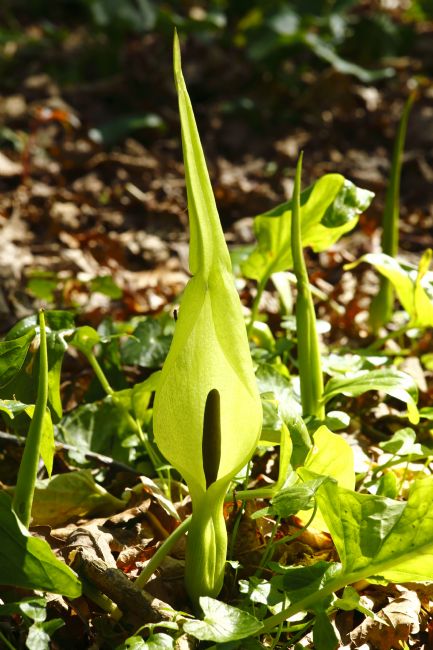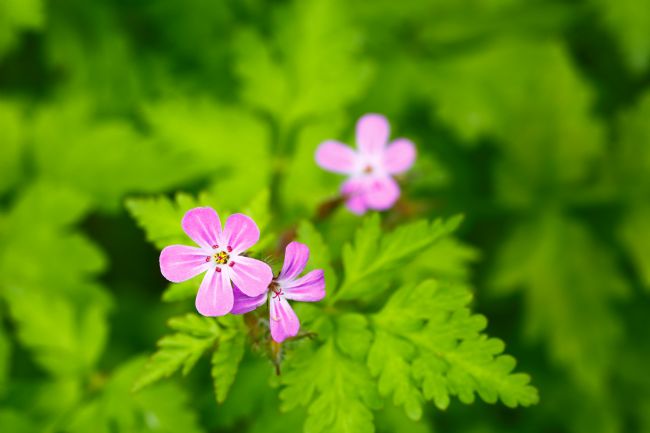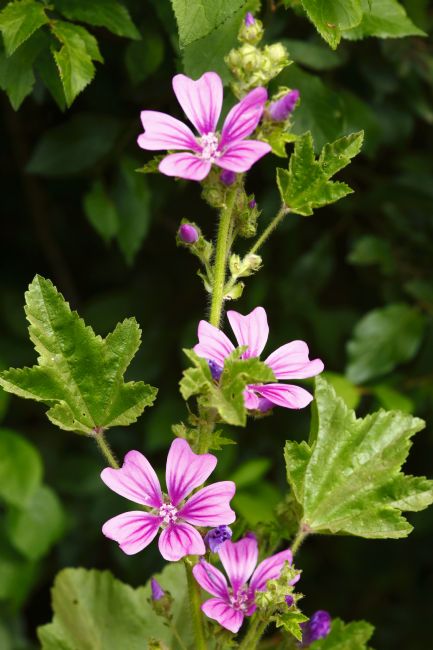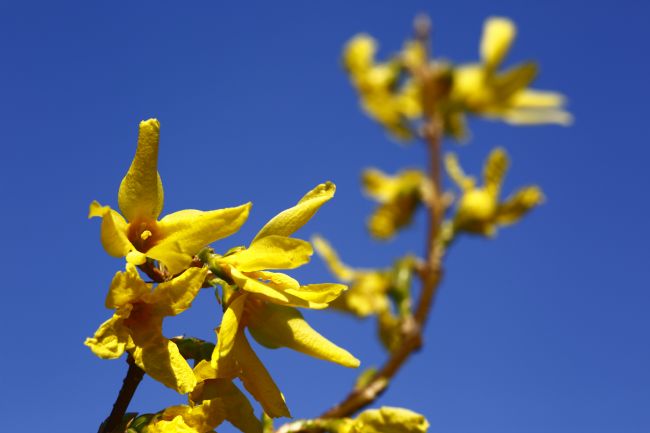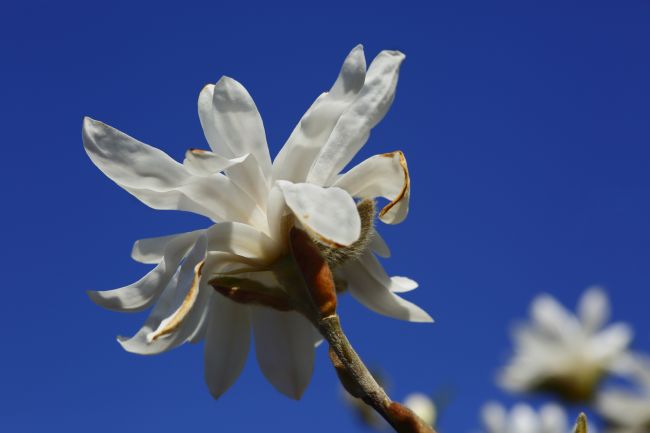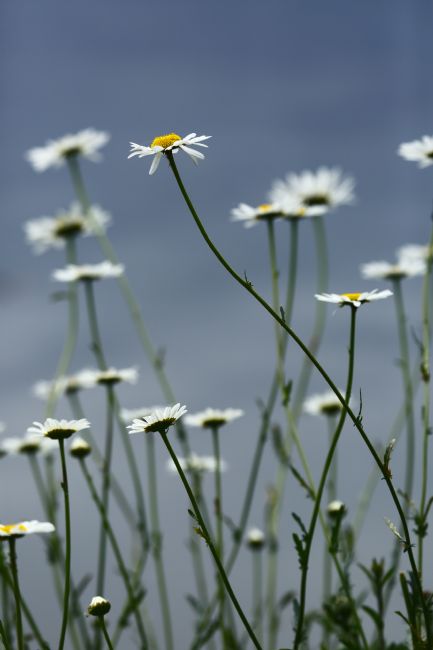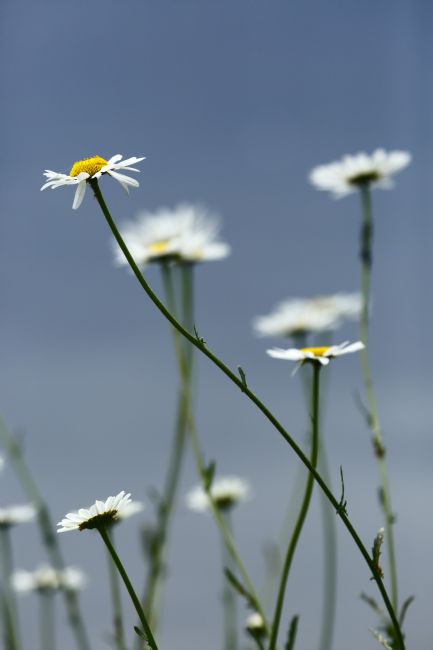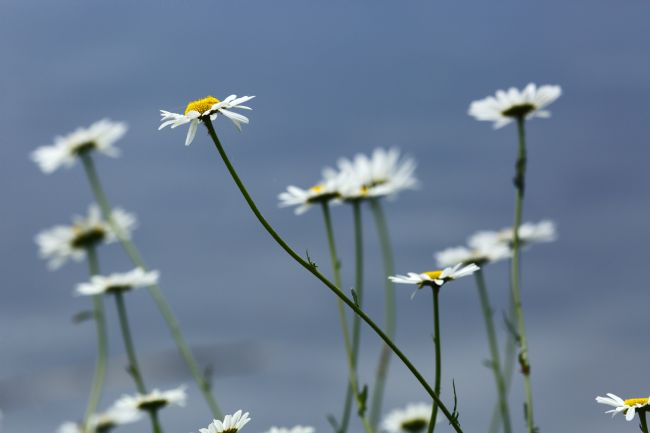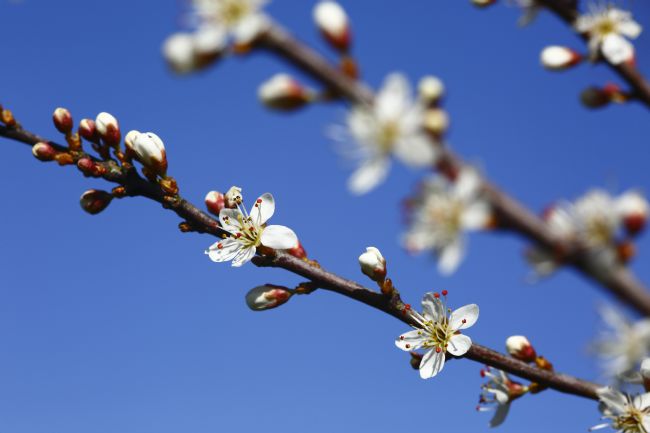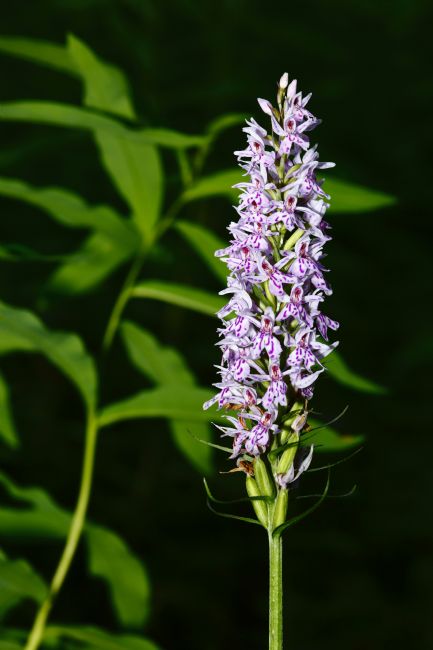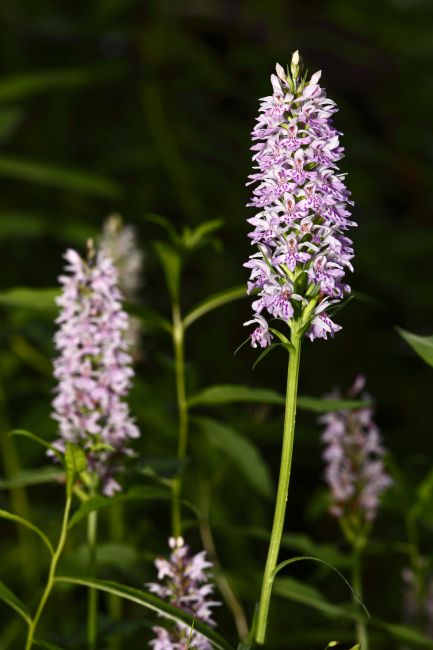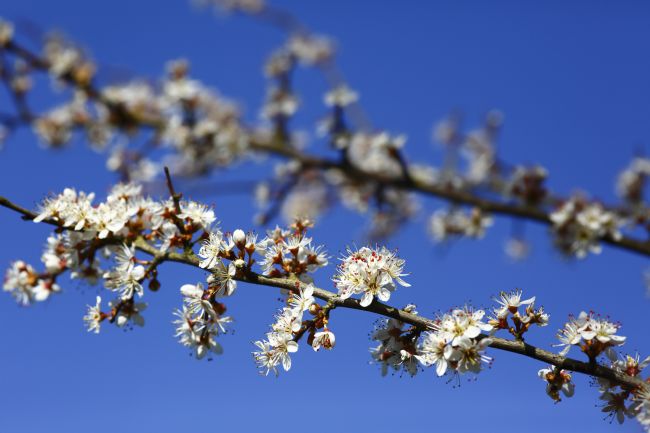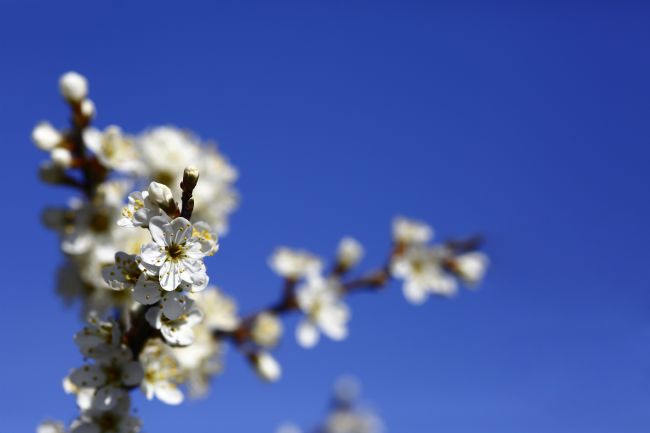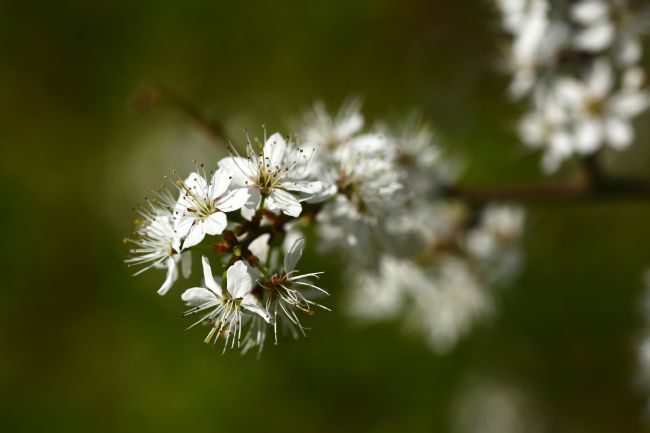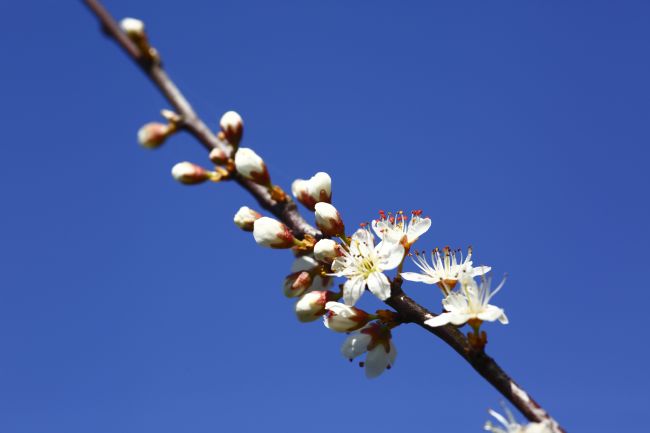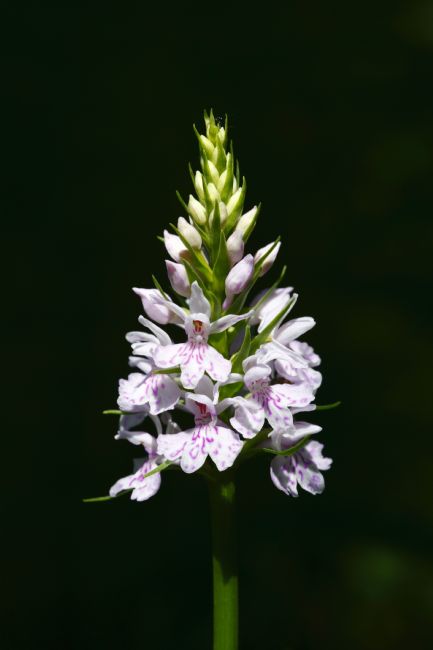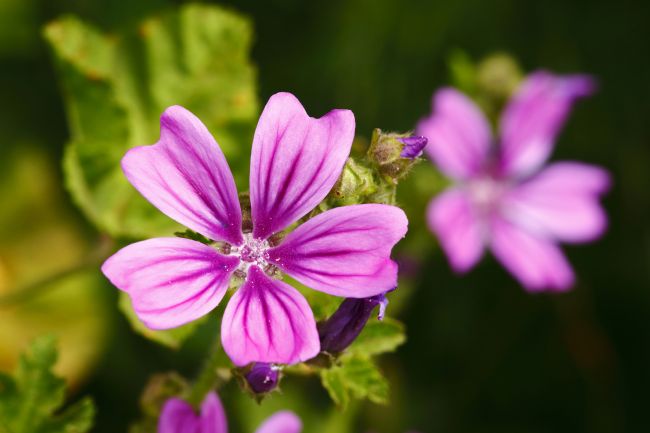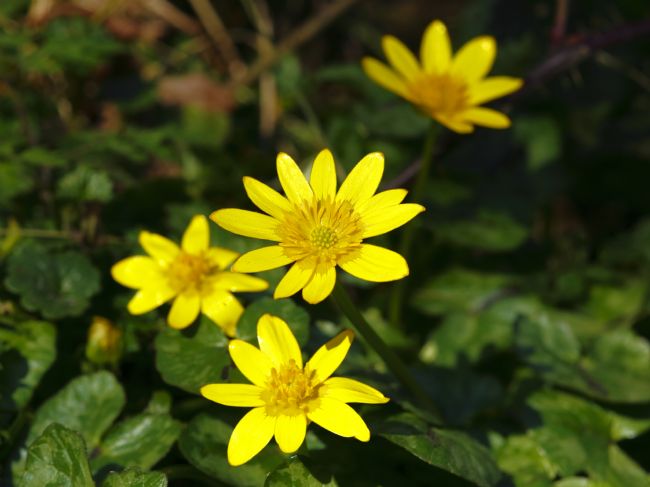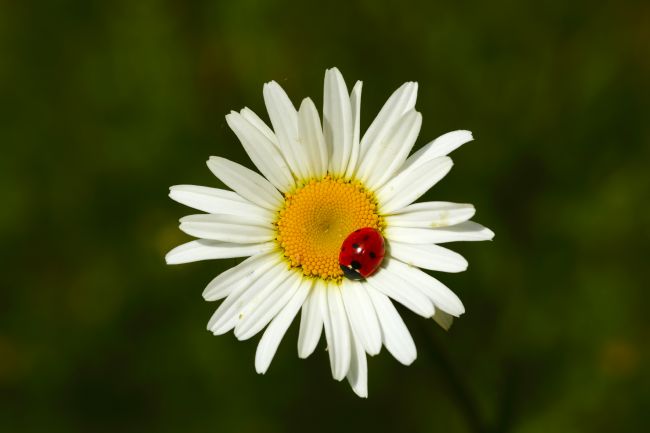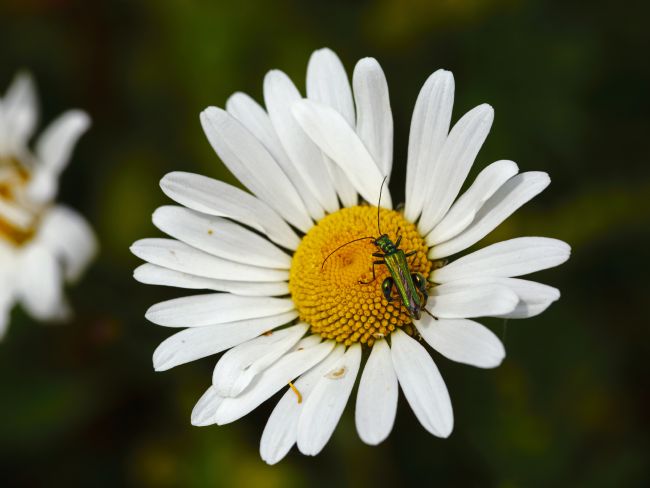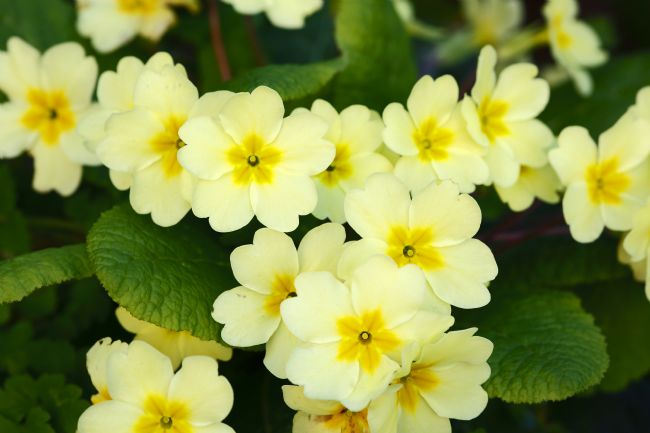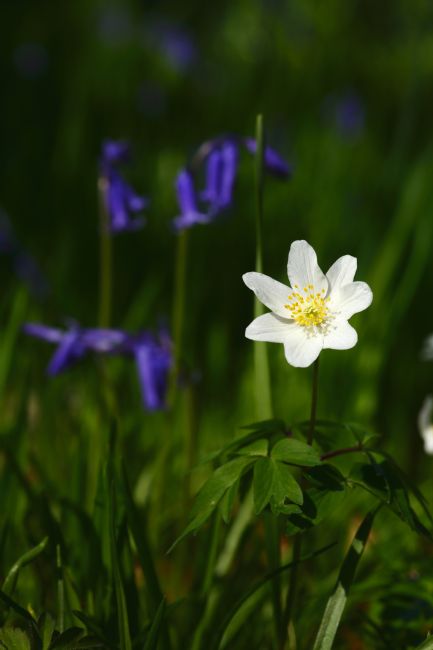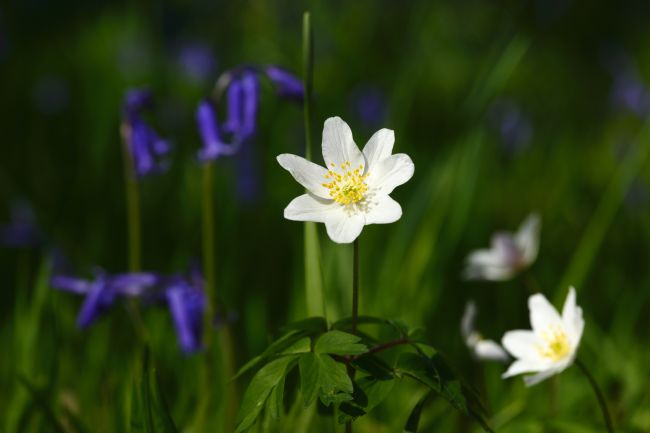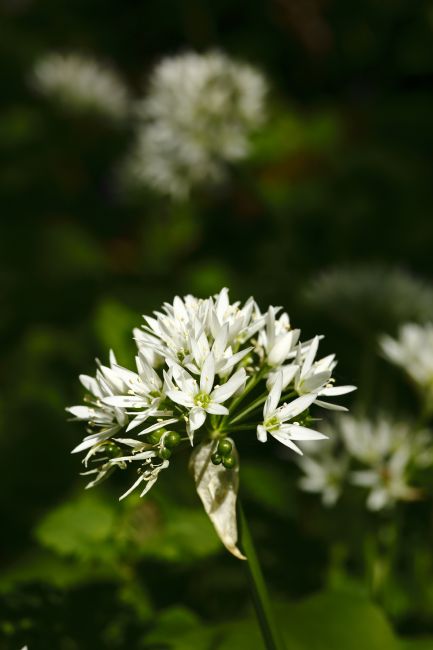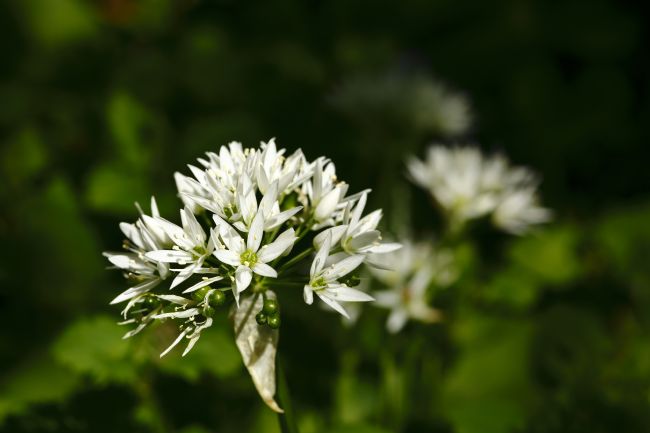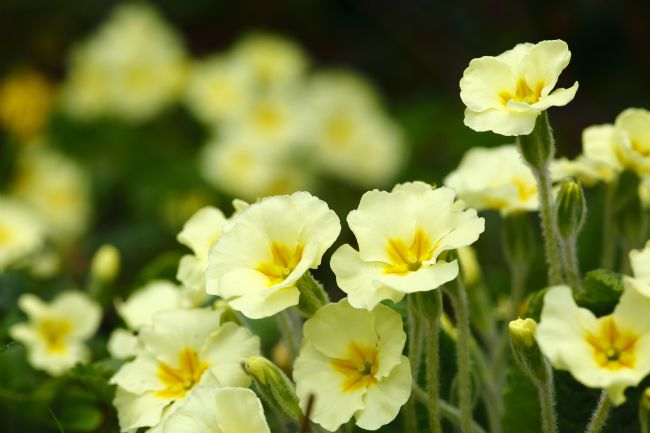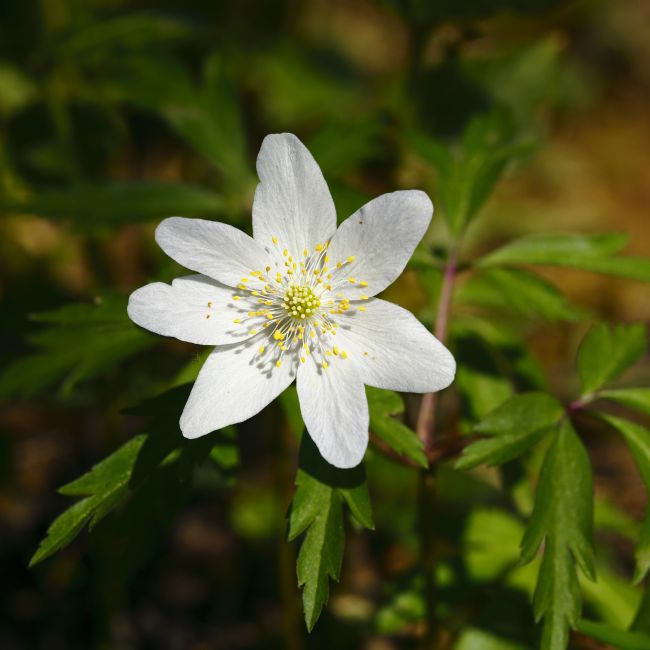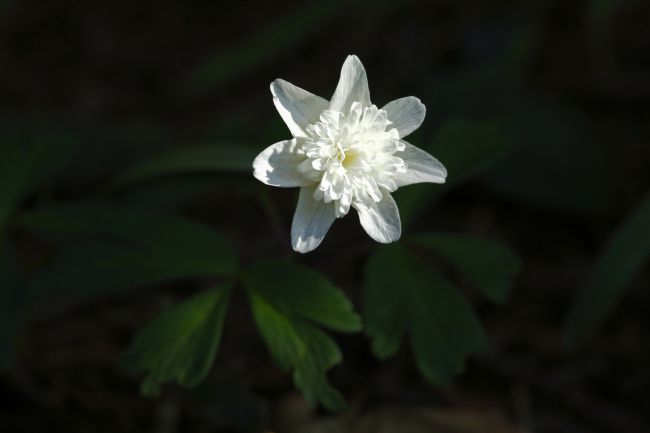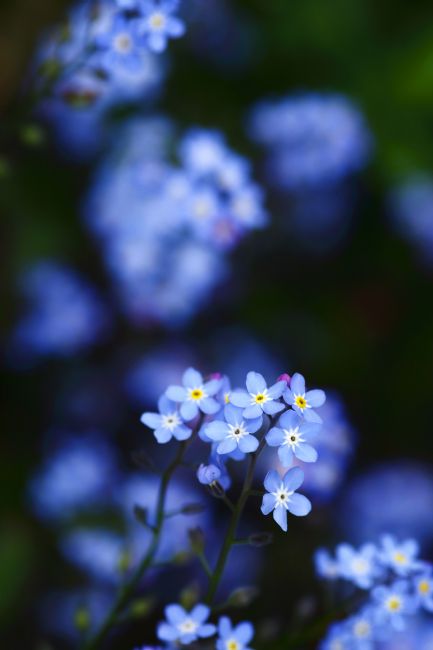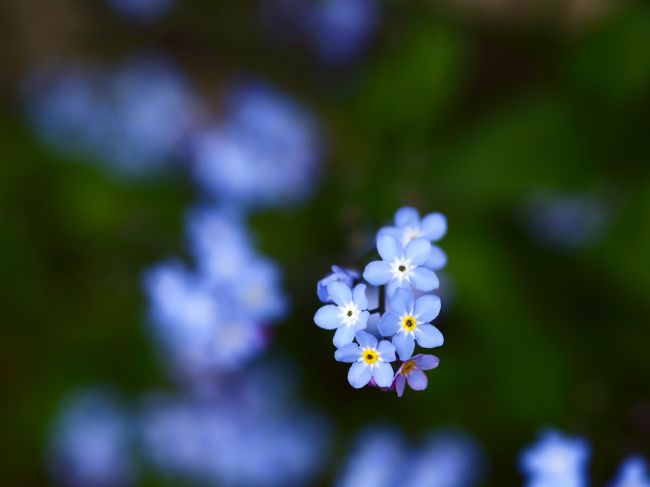The unusual Lords-and-ladies plant (Arum maculatum, often called cuckoo-pint) is a common sight in woodlands and roadsides in the UK in spring and early summer. Its tiny flowers (both male and female) are tucked away beneath the dark brown inflorescence or spadix; this emits an unpleasant aroma to attract insects to pollinate the flowers. In the autumn the upper part of the plant rots away leaving just the stem and a cluster of bright red berrie which are very poisonous.
Little-robin (Geranium purpureum) is a pretty little plant and flower that is a member of the Geranium family. The flower is similar to herb-Robert (Geranium robertianum) though this species is considerably taller and doesn't spread along the ground.
The common mallow (Malva sylvestris) is a familiar and beautiful wildflower found in hedgerows, meadows and roadside verges in spring and early summer. It was used in the past to make marshmallow and is still used as a natural medicinal herb by some people. It has a wide natural range across much of Europe and Asia, in parts of the Middle East the leaves are used in salads and other dishes
The forsythias are a genus of flowering plants in the Oleaceae / olive family and mostly native to eastern Asia. Their bright yellow flowers appear in early spring before the leaves. They are a very popular garden and ornamental plant worldwide, first appearing in Europe in the early 19th century. They are named after William Forsyth.
The star magnolia (Magnolia stellata) is a small, slow-growing shrub / tree originally native to Japan. It is also a popular ornamental / garden plant worldwide. The botanist / collector Charles Maries is thought to have introduced it to the UK in the mid 1870s.
A group of ox-eye / oxeye daisies (Leucanthemum vulgare) in flower on a stormy spring afternoon. The grey background is actually the dark stormy sky reflected in the surface of a lake, with sunshine lighting up the daisy flowers. Ox-eye daisies are a large daisy that can grow to 60cm / 24" or more in height and are native to Europe and western temperate Asia. Similar images with a variety of crops in both horizontal and vertical format are available, please message if you would like to see more!
A group of ox-eye / oxeye daisies (Leucanthemum vulgare) in flower on a stormy spring afternoon. The grey background is actually the dark stormy sky reflected in the surface of a lake, with sunshine lighting up the daisy flowers. Ox-eye daisies are a large daisy that can grow to 60cm / 24" or more in height and are native to Europe and western temperate Asia. Similar images with a variety of crops in both horizontal and vertical format are available, please message if you would like to see more!
A group of ox-eye / oxeye daisies (Leucanthemum vulgare) in flower on a stormy spring afternoon. The grey background is actually the dark stormy sky reflected in the surface of a lake, with sunshine lighting up the daisy flowers. Ox-eye daisies are a large daisy that can grow to 60cm / 24" or more in height and are native to Europe and western temperate Asia. Similar images with a variety of crops in both horizontal and vertical format are available, please message if you would like to see more!
The flowers of the blackthorn or sloe (Prunus spinosa) are among the first to appear in spring in the UK. Its white blossoms appear well before the leaves of most bushes and trees and often while the weather is still cold and wintry. Its small, black fruit can be used to make sloe gin, if they are picked after the first frosts (or frozen after picking, to reduce the bitterness) they can also be used to make jams
A beautiful common spotted orchid (Dactylorhiza fuchsii) in flower. It is one of the UK and Europe's more common orchid species and is also found across much of northern Asia in a wide range of woodland and grassland habitats. The flowers can vary in colour from a very pale to deep pink with delicate patterns.
A group of beautiful common spotted orchids (Dactylorhiza fuchsii) in flower. It is one of the UK and Europe's more common orchids and is also found across much of northern Asia in a wide range of woodland and grassland habitats. The flowers can vary in colour from a very pale to deep pink with delicate patterns. Horizontal versions of this image are also available, please message if you would prefer a print in that format!
The flowers of the blackthorn or sloe (Prunus spinosa) are among the first to appear in spring in the UK. Its white blossoms appear well before the leaves of most bushes and trees and often while the weather is still cold and wintry. Its small, black fruit can be used to make sloe gin, if they are picked after the first frosts (or frozen after picking, to reduce the bitterness) they can also be used to make jams. A vertical version of the image is also available, please message if you would prefer a print in that format!
The flowers of the blackthorn or sloe (Prunus spinosa) are among the first to appear in spring in the UK. Its white blossoms appear well before the leaves of most bushes and trees and often while the weather is still cold and wintry. Its small, black fruit can be used to make sloe gin, if they are picked after the first frosts (or frozen after picking, to reduce the bitterness) they can also be used to make jams. Image is also available with all the flowers in focus, please message if you would prefer to have that on a print instead!
The flowers of the blackthorn or sloe (Prunus spinosa) are among the first to appear in spring in the UK. Its white blossoms appear well before the leaves of most bushes and trees and often while the weather is still cold and wintry. Its small, black fruit can be used to make sloe gin, if they are picked after the first frosts (or frozen after picking, to reduce the bitterness) they can also be used to make jams
The flowers of the blackthorn or sloe (Prunus spinosa) are among the first to appear in spring in the UK. Its white blossoms appear well before the leaves of most bushes and trees and often while the weather is still cold and wintry. Its small, black fruit can be used to make sloe gin, if they are picked after the first frosts (or frozen after picking, to reduce the bitterness) they can also be used to make jams
A common spotted orchid (Dactylorhiza fuchsii) in the early stages of flowering, with only the lower flowers on the inflorescence in bloom. It is one of the UK and Europe's more common orchids and is found in a wide range of woodland and grassland habitats. The flowers can vary in colour from a very pale to deep pink with delicate patterns.
A close up of the common mallow (Malva sylvestris), a familiar and beautiful wildflower found in hedgerows, meadows and roadside verges in spring and early summer. It was used in the past to make marshmallow and is still used as a natural medicinal herb by some people. It has a wide natural range across much of Europe and Asia, in parts of the Middle East the leaves are used in salads and other dishes
Lesser celandine flowers (Ficaria verna, formerly Ranunculus ficaria) in a damp woodland in early spring. A member of the buttercup family, these beautiful flowers are among the first to appear in spring in the UK and are a common sight in especially damper areas of woodlands, hedgerows and countryside.
A seven-spot ladybird (Coccinella septempunctata) on the flower of an ox-eye / oxeye daisy (Leucanthemum vulgare). Ladybirds are members of the Coccinellidae family of beetles, popular and well known for their bright colours and patterns. The seven-spot ladybird is the most common species in Europe. Ox-eye daisies are a large daisy that can grow to 60cm / 24" or more in height and are native to Europe and western temperate Asia.
A thick-legged flower beetle (Oedemera nobilis) on the flower of an ox-eye / oxeye daisy (Leucanthemum vulgare). They are a common and distinctive beetle in most of western Europe, especially Mediterranean regions (where they are also found in North Africa). Since the mid 1990s they have also expanded to the British Isles and are now quite common in southern England too. Only the males have the thick bulbous hind legs.
The common or English primrose (Primula vulgaris) is one of the best known and most popular spring flowers in the U. It is one of the earlier flowers to appear in spring and is common in woodlands, hedgerows and near streams, generally preferring damp and shady areas. Many Primula cultivars and hybrids with a wide range of colours have been bred for gardens
Wood anemones (Anemonoides nemorosa) are a member of the buttercup family (Ranunculacea) and appear mainly in shady woodlands in early spring. The blue flowers in the background are common or English bluebells (Hyacinthoides non-scripta), the species that produces the famous blue carpets known as bluebell woods in spring. Both are classed as indicator species for ancient woodlands.
Wood anemones (Anemonoides nemorosa) are a member of the buttercup family (Ranunculacea) and appear mainly in shady woodlands in early spring. The blue flowers in the background are common or English bluebells (Hyacinthoides non-scripta), the species that produces the famous blue carpets known as bluebell woods in spring. Both are classed as indicator species for ancient woodlands.
Wild garlic flowers (Allium ursinum) are a common sight in spring in damp woodlands across much of Europe. Also known as ramsons, wild cowleek and broad-leaved garlic, it often grows in the same woods as bluebells in the UK. The leaves are often used as a herb in salads and soups; the bulbs and flowers are also edible.
Wild garlic flowers (Allium ursinum) are a common sight in spring in damp woodlands across much of Europe. Also known as ramsons, wild cowleek and broad-leaved garlic, it often grows in the same woods as bluebells in the UK. The leaves are often used as a herb in salads and soups; the bulbs and flowers are also edible.
The common or English primrose (Primula vulgaris) is one of the best known and most popular spring flowers in the U. It is one of the earlier flowers to appear in spring and is common in woodlands, hedgerows and near streams, generally preferring damp and shady areas. Many Primula cultivars and hybrids with a wide range of colours have been bred for gardens
Close up of a wood anemone (Anemonoides nemorosa),a beautiful and well known flower that appears mainly in shady woodlands in early spring. It is a member of the buttercup family Ranunculaceae.
This unusual flower was growing among lots of wood anemones in an old churchyard. I think it must be an anemone cultivar of some sort, the petals and leaves are very similar to the wood anemone but it has extra frills of petals in the centre of the flower. The wood anemone (Anemonoides nemorosa) is a beautiful and well known flower that appears mainly in shady woodlands in early spring.
The cute little blue flowers of the forget-me-not (Myosotis sylvatica) are a common sight across much of Europe in spring. Also called the wood or woodland forget-me-not, the flowers are small, usually less than 1cm across. There are many cultivars of the species which are popular as bedding plants in gardens.
The cute little blue flowers of the forget-me-not (Myosotis sylvatica) are a common sight across much of Europe in spring. Also called the wood or woodland forget-me-not, the flowers are small, usually less than 1cm across. There are many cultivars of the species which are popular as bedding plants in gardens.
